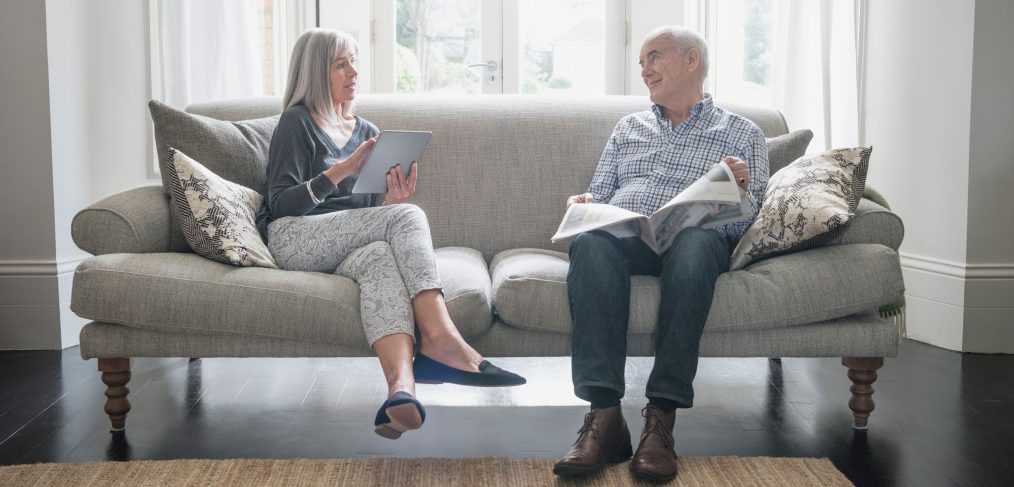
Renting Isn’t Just for Millennials Anymore
CRTKL’s Nick Hyams discusses the benefits of a next generation Private Rented Sector model for more mature tenants
As architects, we’re expected to come up with solutions to problems within the built environment. At its simplest, this is the design and implementation of a tactic that meets our client’s need, be it a better store layout to optimize customer flow for a retailer, a guest room in a major flag’s boutique property with local flavour or a new transit station for a burgeoning city.
Increasingly, though, we find ourselves in the trenches of emerging business models, building multi-disciplinary expertise well beyond the traditional design and construction model in order to address the needs of an ever-evolving, complex market.
Evolution of the Private Rented Sector (PRS)
This has most definitely been the case as we have witnessed the rise of the Private Rented Sector, or PRS, in the UK over the last several years. In early 2016, PRS was declared the “fastest growth real estate sector in the country” with a value of £1.29 trillion.
What gives? Home ownership was long the dream—an Englishman’s home is his castle, after all—yet demand has long been outstripping supply and the housing shortage is certainly no secret. According to JLL, the momentum behind this movement continues to grow as renting has evolved from a last resort to a favoured option, particularly for the younger generation.
Yet a new kind of momentum has entered the scene—one with perhaps more discerning taste and a little more grey in its hair. While the majority of today’s PRS developments cater to the millennial generation, shifting preferences of a more mature demographic indicate that the rental lifestyle may be desirable for reasons that both align with and defy convention.
Ageing in Place
To explain this recent sea change, we look to a concept that architects and designers have long explored in the field of residential design: ageing in place. In summary, it is the notion that a home should be flexible and adaptable enough to accommodate tenants over the course of multiple life stages, from the early parenting years to empty-nester and retirement years. Most importantly, it focuses on keeping residents comfortable, productive, healthy and independent so as to avoid the need to buy, sell, and/or move house multiple times as their needs change.
In today’s society, ageing in place is taking on a new look. Instead of moving out to a well-appointed country home once the kids graduate from university, the baby boomer generation is keeping their sights set on the city. With more time on their hands to enjoy life, many are looking to take greater advantage of, rather than retreat from, the cultural offerings cities provide. Walkable, pedestrian-friendly, transit-oriented districts ensure that basic amenities remain within reach.
This reversal of the suburban retirement trend can also be traced to a number of motivators, including a desire to remain socially connected to family and friends—particularly if the boomer’s millennial kids are having Gen Alpha kids of their own, in which case Gran and Grandpop want to be close by. And finally, we’re seeing an increasing number of seniors seeking to shrug off the responsibilities of home ownership.
Living the Good Life
So how to accommodate this new population of more mature urban dwellers? According to the World Health Organization’s report on Global Age-Friendly Cities, the design requirements are pretty basic: even surfaces, quality and structurally sound materials, elevators for multi-level accessibility, adequate space for storage and for moving around in.
But for PRS, considering its appeal as a vehicle for investment, this group inspires a new approach that blends the comforts of home with the convenience of a hotel; a welcoming, secure environment designed and managed in a manner that maintains the asset—the built environment—while also supporting the wellbeing of the resident.
Scalable Care Packages
Crafting an audience-specific amenities package presents unique opportunities to cater to changing needs and to design for a particular lifestyle. Scalable care packages would allow the resident to customize their experience and make adjustments accordingly as they age in place, giving them the peace of mind that their home will evolve and adapt to their needs. Leveraging easy-to-use technology here will be key; perhaps optional amenities come in the form of assistive or health-related technologies or those that make daily life more convenient, like Amazon Echo or Google Home, that appeal to all generations.
Colour, Materials and Space
Ah, the joys of getting older. As eyesight, hearing and memory may begin to fade, thoughtful design can help to minimize the impact on daily living. Taking a page from assisted living design techniques—such as the use of medium contrast colours to help with depth perception and using landmarks instead of, or in addition to, signage for wayfinding—is a good place to start. And, of course, designing with physical disabilities in mind is paramount to accessibility in any space, but it deserves special consideration in this context: spaces will need to be wide enough to accommodate walkers and wheelchairs, and handrails and height adjustment may be necessary to support residents’ activities.
Concierge Services
A valuable asset to any hotel or apartment building, the concierge may take on new responsibilities and a vested interest in quality of life essentials. Beyond restaurant reservations, activity recommendations, transit arrangements and package delivery, the concierge could provide information on educational, social, cultural and volunteer opportunities or arrange for service and maintenance of one’s flat, as well as fulfil requests for more upscale amenities like butler service and chef-provided private dining.
The full evolution and impact of Next Generation PRS is yet to be seen, but one thing is for certain: the product will need to creatively blend the best of different design disciplines in order to arrive at an attractive, affordable and sustainable solution that responds to a more mature market.
